Money
Money in the chicken coop
Sounds like Albert didn't want his sisters to know about the money in the chicken coop. Perhaps it was his intention for it all to burn after he died.
Atlanta Journal - Dec 15, 1968
Posted By: Alex - Thu Jul 18, 2024 -
Comments (2)
Category: Money, Inheritance and Wills, 1960s
Money Card
No need for a subliminal hook for future customers in this one--it's all explicit! Buy American Express Traveler's Cheques.The entry at Board Game Geek.
Posted By: Paul - Tue Jun 04, 2024 -
Comments (0)
Category: Business, Advertising, Games, Money, 1970s, Europe
Reconstructing shredded paper money
The Hong Kong Monetary Authority visitor center sells souvenir glass containers full of shredded paper money. Each container (costing $100 HKD) is advertised as containing 138 complete $1000 HKD banknotes.Researcher Chunt T. Kong set out to determine whether he could use "computer vision" to reconstruct the shredded banknotes. If he could, this would mean that for an investment of $100 HKD he would be able to reconstruct notes worth $138,000 HKD.

He determined that, yes, in theory the banknotes could be reconstructed. But he encountered a few problems:
First, the souvenir containers often contained far fewer than 138 notes. Some had as few as 20 notes in them. He found stones hidden in some of the containers. This, he complained, was false advertising. He noted, "it appears that the Hong Kong Monetary Authority has broken the law."
The second problem: "even though the shredded banknote pieces could construct a complete banknote, the serial number may not have come from the same banknote, and there is a high chance that it could not be exchanged for real money."
He didn't address how all the little pieces would be stuck back together. With scotch tape?
But, of course, it was all just a theoretical exercise. Though he says that, having informed the Hong Kong Monetary Authority visitor center of what he did, they're now no longer selling the shredded money.
More info: "The possibility of making $138,000 from shredded banknote pieces using computer vision"
via New Scientist
Posted By: Alex - Sat May 04, 2024 -
Comments (1)
Category: Money, AI, Robots and Other Automatons, Computers
Saved pennies crash through ceiling
Aug 1947: Clarence Ellsworth had been saving pennies by dropping them through a crack in his attic floor. Finally, when the number of pennies reached 1,672, the weight of the pennies broke through the ceiling and landed in his living room.This raises the question: how much did 1,672 pennies weigh?
According to Wikipedia, pennies issued before 1982 each weighed 3.11 grams since they were made from 95% copper. After 1982, the U.S. Mint substituted a copper-plated zinc penny that weighed less.
3.11 times 1,672 comes out to 5200 grams (rounding up) — or approximately eleven and-a-half pounds.
I'm surprised that was enough to break his ceiling. Perhaps there were other issues, such as water damage, that contributed to the break.
According to an online inflation calculator, $16.72 in 1947 money would be worth $234.18 today. And the repairs would have cost approximately $175 (in today's money).
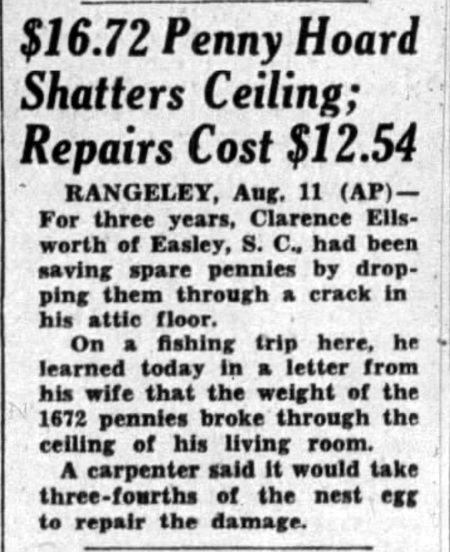
Bangor Daily News - Aug 12, 1947
Posted By: Alex - Tue Apr 16, 2024 -
Comments (2)
Category: Money, 1940s
Coin-Toss Experiment
Is a coin toss truly random? Not according to the "D-H-M model" which proposes that a tossed coin is slightly more likely to land on the same side that it started.To test this model, a team of researchers at the University of Amsterdam arranged for a group of subjects to flip coins a total of 350,757 times. Their conclusion: "the data reveal overwhelming statistical evidence for the presence of same-side bias."
What this means as a money-making strategy:
More info: "FAIR COINS TEND TO LAND ON THE SAME SIDE THEY STARTED: EVIDENCE FROM 350,757 FLIPS"
Posted By: Alex - Thu Apr 11, 2024 -
Comments (5)
Category: Money, Experiments
Thomas Snell’s Millions
Rich people are weird.Before dipping into this story, some perspective on the value of the estate.
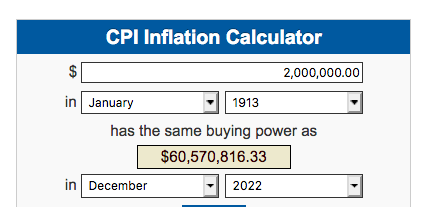

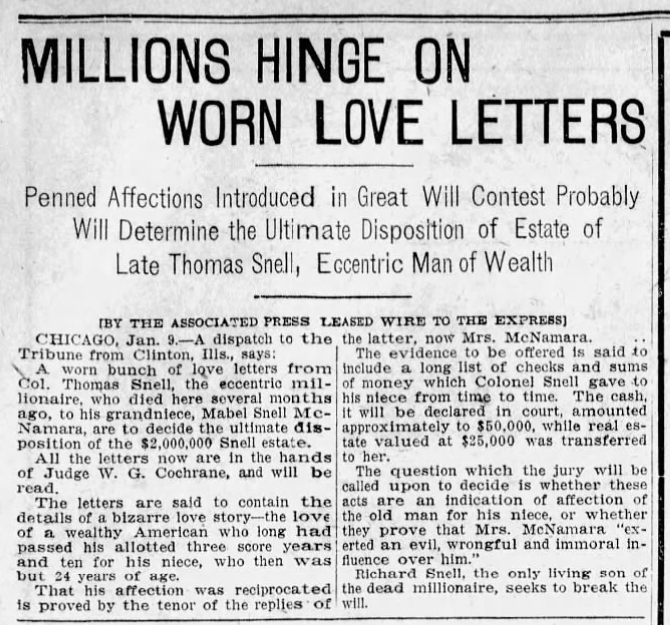

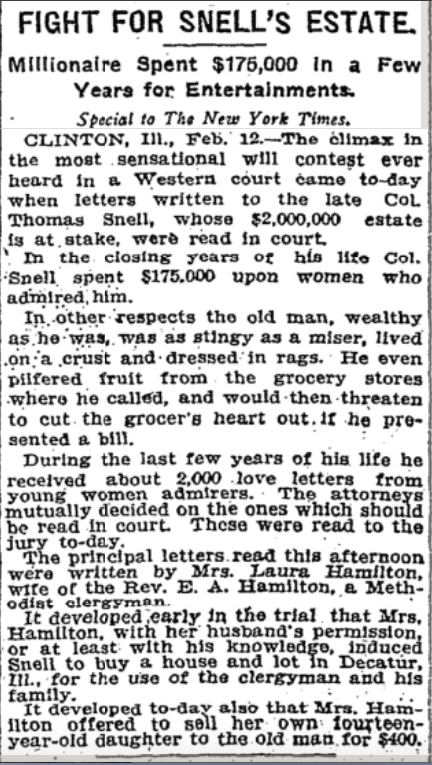

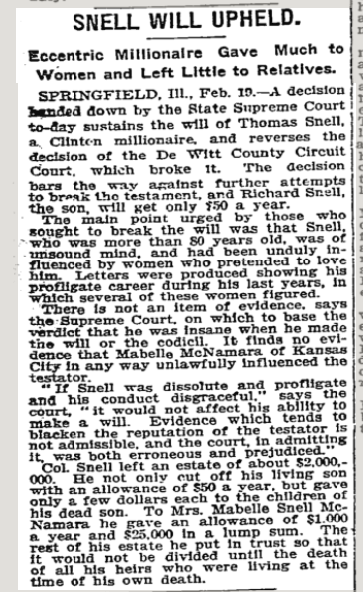
And as final icing on the cake.


Posted By: Paul - Sun Mar 10, 2024 -
Comments (0)
Category: Death, Money, Lawsuits, 1900s, Women
April Fool’s Day Prank Millionaire

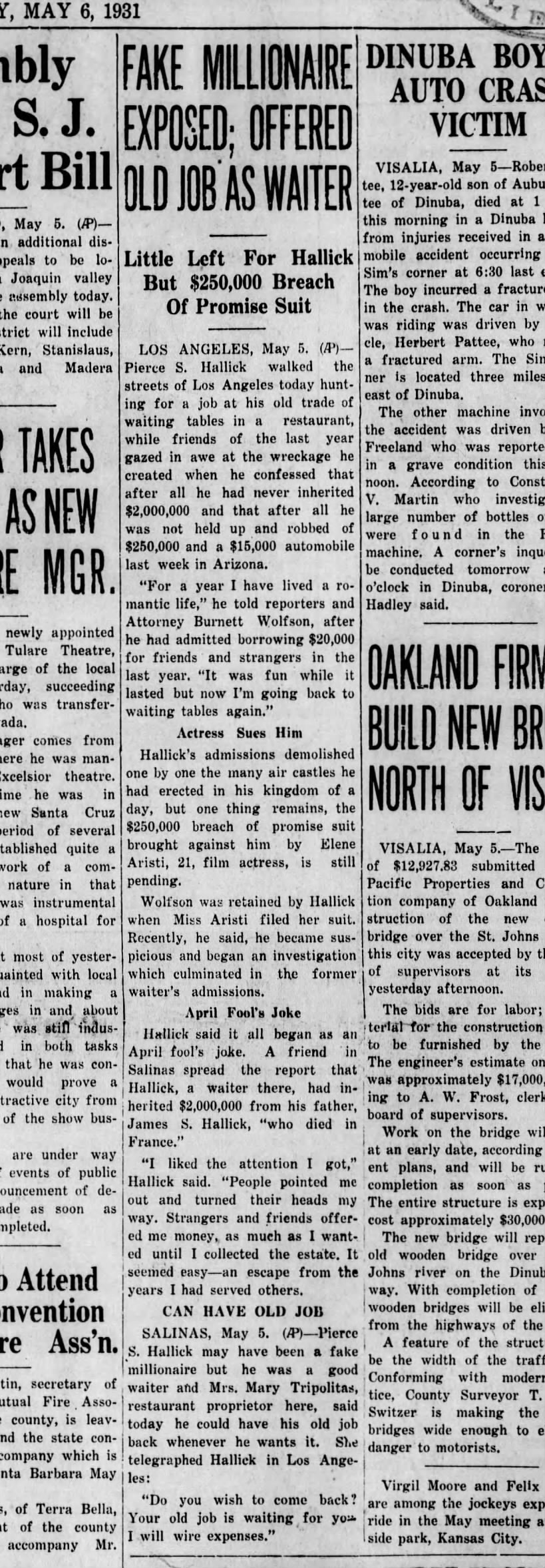


Posted By: Paul - Sun Mar 03, 2024 -
Comments (0)
Category: Hoaxes and Imposters and Imitators, Holidays, Money, Friends, Partners, Co-Workers and Other Associates, 1930s
Ziegfeld Coin Test

Life - Dec 13, 1948
Posted By: Alex - Wed Dec 27, 2023 -
Comments (0)
Category: Money, ShowBiz, 1940s
Whole brain not needed for handling money
Mention to any friends who are bankers or accountants that science has shown they could have a frontal lobotomy and still do their job, and see how they react.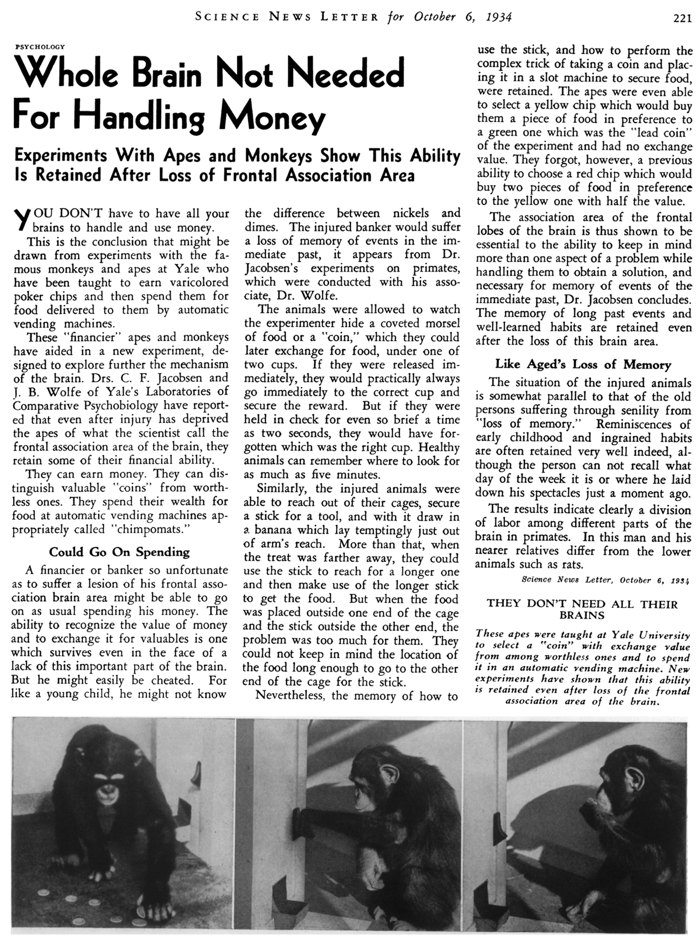
Click to enlarge
Posted By: Alex - Mon Sep 04, 2023 -
Comments (0)
Category: Money, Experiments, Psychology, 1930s
Bank Robber Immobilizing Vestibule
So near as I can interpret this patent, in front of every bank teller's window is erected a revolving-door chamber. The customer--or robber--must enter the chamber, which revolves shut behind him. A good customer is allowed by the clerk's pressing of a switch to exit. The robber is held in place. What could go wrong?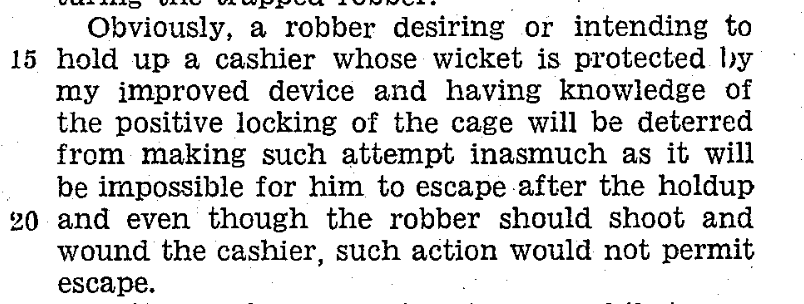
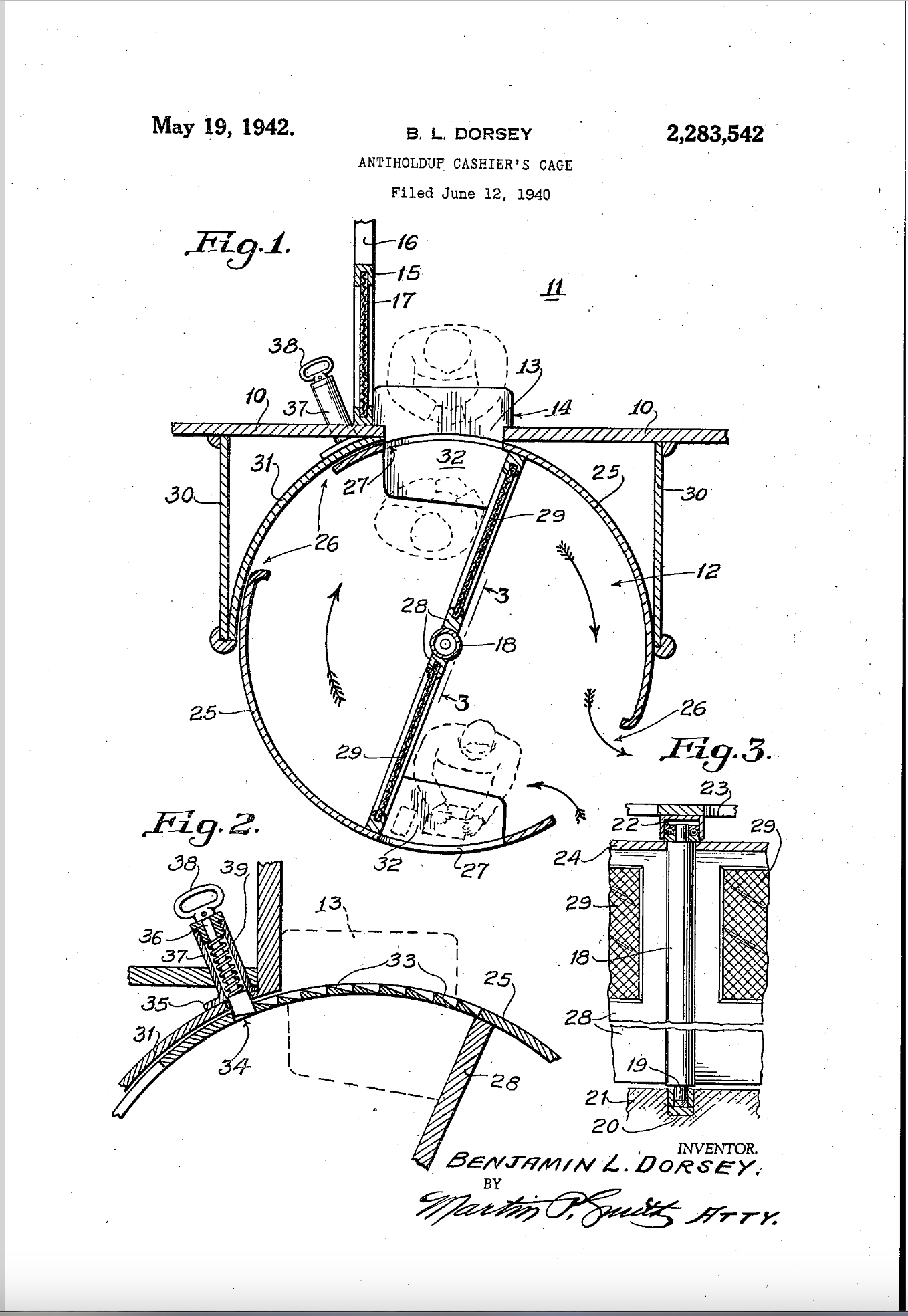
Posted By: Paul - Thu Aug 17, 2023 -
Comments (1)
Category: Crime, Inventions, Patents, Money, Innocent Bystanders, Passersby, Witnesses and Accidental Victims, 1940s

| Who We Are |
|---|
| Alex Boese Alex is the creator and curator of the Museum of Hoaxes. He's also the author of various weird, non-fiction, science-themed books such as Elephants on Acid and Psychedelic Apes. Paul Di Filippo Paul has been paid to put weird ideas into fictional form for over thirty years, in his career as a noted science fiction writer. He has recently begun blogging on many curious topics with three fellow writers at The Inferior 4+1. Contact Us |




